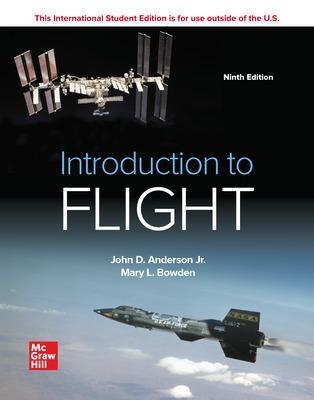
Introduction to Flight ISE
McGraw-Hill Education (Verlag)
978-1-260-59799-8 (ISBN)
If you want to understand the engineering behind how airplanes fly, how spacecrafts are launched into space, and how they are able to follow the right path to their destination, this book is for you.
Mary L. Bowden grew up in New York City where she attended a french school, the Lycée Françaisde New York, graduating after the first year of the french Baccalaureat degree. She received a Bachelor of Arts degree in Mathematics from Cornell University in 1978. Then, thanks to an Amelia EarhartScholarship from Zonta International, she enrolled at MIT and obtained first a Master of Science degree in 1980 and then a Doctor of Science degree in Aeronautics and Astronautics in 1988. Her graduate degrees focused on human factors for space construction and dynamics of large space structures. After graduation, Dr. Bowden spent 8 years working in the aerospace industry for a number of different companies, including American Composites Technology, a small company in Massachusetts focused on pultrusion technology; American Rocket Company in California developing a hybrid launch vehicle; and most notably AEC-Able Engineering, also in California, a small aerospace mechanisms company designing, building, and testing the deployable masts for theInternational Space Station solar arrays. In 1996, Dr. Bowden joined the faculty of the Aerospace Engineering Department at the University ofMaryland College Park (UMD) as a Visiting Professor. She served as the Associate Graduate Director in Aerospace for 10 years, and later served as the Acting Director of the Women in EngineeringProgram for the Clark School of Engineering at UMD from 2017 to 2020. She is now a Senior Lecturer in Aerospace Engineering and a Keystone Instructor for the Clark School where she specializes in teaching introductory Mechanics courses and an Aerospace Systems course, as well as upper levelAerospace Structures and Space Systems Design courses. Dr. Bowden received the Women InAerospace (WIA) Aerospace Educator Award in 2016. Dr. Bowden is also the Director of the Balloon Payload Program at UMD, which was started in 2004, sponsored by the Maryland Space Grant Consortium, with the goal of giving aerospace students the opportunity to fly experiments in the near-space environment. The program just carried out its 92nd tracked flight of a helium-filled weather balloon, and is continuing with roughly three balloon launches each semester. Over the years, these flights have lifted scores of payloads for hundreds of students from half a dozen different schools in Maryland. The Balloon Payload Team has achieved a number of accomplishments including flying a few successful payloads on NASA sponsored High AltitudeBalloon flights (through the HASP program), and launching a micro-gravity experiment on a sounding rocket from NASA Wallops Flight Facility (through the RockSatX program). Dr. Bowden received the A. James Clark Student Competition Advisor of the Year Award in 2017 for supervising numerous award-winning teams along with her husband, Dr. David Akin.
1) The First Aeronautical Engineers2) Fundamental Thoughts
3) The Standard Atmosphere
4) Basic Aerodynamics
5) Airfoils, Wings, and Other Aerodynamics Shapes
6) Elements of Airplane Performance
7) Principles of Stability and Control
8) Space Flight (Astronautics)
9) Propulsion
10) Hypersonic Vehicles
Appendix A - Standard Atmosphere, SI Units
Appendix B - Standard Atmosphere, English Engineering Units
Appendix C - Symbols and Conversion Factors
Appendix D - Airfoil Data
Answer Key
Index
| Erscheinungsdatum | 23.04.2021 |
|---|---|
| Zusatzinfo | 62 Illustrations |
| Verlagsort | OH |
| Sprache | englisch |
| Maße | 175 x 226 mm |
| Gewicht | 1304 g |
| Themenwelt | Technik ► Fahrzeugbau / Schiffbau |
| Technik ► Maschinenbau | |
| ISBN-10 | 1-260-59799-7 / 1260597997 |
| ISBN-13 | 978-1-260-59799-8 / 9781260597998 |
| Zustand | Neuware |
| Haben Sie eine Frage zum Produkt? |
aus dem Bereich


